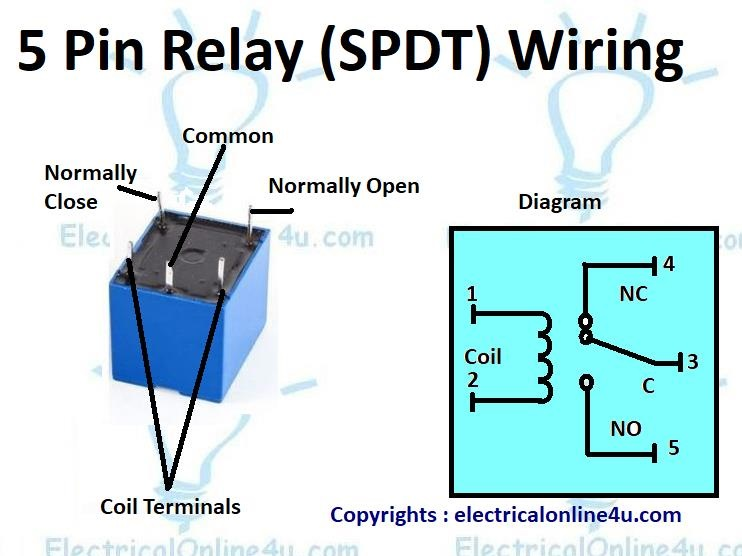Unlocking the Power of Relays: Normally Open and Normally Closed Explained
Imagine a silent guardian, directing the flow of electricity with a simple flick of a switch. That's the essence of a relay, a small but mighty electromechanical device that controls a high-power circuit with a low-power signal. At the heart of this functionality lie two key concepts: normally open (NO) and normally closed (NC) contacts. Understanding these fundamental principles unlocks the true potential of relays in a wide range of applications, from controlling industrial machinery to automating home appliances.
Relays act as electrical intermediaries, bridging the gap between low-power control circuits and the higher-power circuits they govern. This isolation is critical for safety and efficiency, preventing delicate control systems from being overloaded. The magic happens within the relay, where a small electromagnet, energized by the control signal, physically moves a switch to either connect or disconnect the high-power circuit. This switching action is defined by the state of the relay contacts: normally open or normally closed.
A normally open (NO) contact, also known as a form A contact, remains open, creating an open circuit, when the relay is not energized. Applying a control signal activates the electromagnet, pulling the contact closed and completing the circuit. Think of it as a drawbridge: raised by default, allowing no passage, but lowered on command to bridge the gap. Conversely, a normally closed (NC) contact, or form B contact, operates in the opposite manner. It remains closed, completing the circuit, in its de-energized state. When the relay is activated, the contact opens, breaking the circuit flow. This is akin to a gate, normally closed to restrict access, but opened when signaled.
These seemingly simple concepts form the foundation of countless electrical systems. The choice between NO and NC contacts depends entirely on the desired functionality. Do you need a circuit to activate when a signal is applied? Choose NO. Do you require a circuit to deactivate when a signal is sent? Opt for NC. This flexibility allows relays to be integrated into a vast array of applications, from simple on/off switches to complex control systems.
The history of relays can be traced back to the early days of telegraphy, where they were essential for amplifying and repeating weak signals over long distances. Over time, relays evolved, becoming smaller, faster, and more reliable. Their importance grew as they became integral components in industrial automation, power distribution, and even household appliances. Common issues related to relays include contact wear, coil burnout, and sensitivity to external magnetic fields. However, advancements in relay technology have mitigated many of these concerns, leading to more robust and long-lasting devices.
A simple example of a relay in action is a thermostatically controlled heating system. The thermostat, acting as the low-power control, uses a relay with a normally open contact to control the high-power heating element. When the temperature drops below the set point, the thermostat sends a signal to the relay, energizing the coil and closing the NO contact. This completes the circuit to the heater, turning it on. When the desired temperature is reached, the thermostat de-energizes the relay, opening the NO contact and switching off the heater.
Advantages and Disadvantages
| Advantages | Disadvantages |
|---|---|
| Isolation between control and load circuits | Potential for contact wear and failure |
| Ability to switch high power with low power signals | Can be susceptible to electromagnetic interference |
| Relatively inexpensive | Generate a clicking sound when switching |
Frequently Asked Questions:
1. What is the difference between NO and NC contacts? A: NO contacts are open when the relay is de-energized, while NC contacts are closed when the relay is de-energized.
2. How do I choose between NO and NC contacts? A: The choice depends on the desired functionality. NO contacts activate a circuit when the relay is energized, while NC contacts deactivate a circuit when the relay is energized.
3. What are some common applications of relays? A: Relays are used in a wide range of applications, including industrial automation, power distribution, and home appliances.
4. What are the main issues related to relays? A: Common issues include contact wear, coil burnout, and sensitivity to external magnetic fields.
5. How does a relay work? A: A relay uses a small electromagnet to move a switch, controlling a high-power circuit with a low-power signal.
6. What is the history of relays? A: Relays originated in the early days of telegraphy and have evolved to become crucial components in various electrical systems.
7. What are the benefits of using relays? A: Relays provide isolation between circuits, enable high-power switching with low-power signals, and are relatively inexpensive.
8. What is the importance of relays in electrical systems? A: Relays are essential for controlling high-power circuits safely and efficiently, enabling automation and remote control.
In conclusion, the seemingly simple concepts of normally open and normally closed contacts are fundamental to understanding and utilizing the power of relays. These versatile devices act as electrical gatekeepers, enabling efficient and safe control of high-power circuits. From controlling industrial machinery to automating household appliances, relays play a crucial role in countless applications. By understanding their functionality, benefits, and best practices, you can harness the potential of relays to innovate and optimize electrical systems across diverse industries. Take the time to explore the world of relays further and unlock the possibilities they offer.
Who brought ellen harvelle to life in supernatural
The art of the invitation kad jemputan majlis makan malam
College football bowl game schedules













